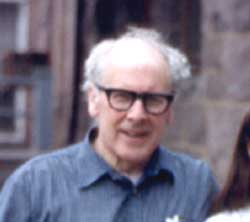 Father Des Wilson has been living and working in West Belfast since 1966. In 1975 he went to Ballymurphy, one of the most impoverished and demonized areas of the city. For forty years he has drawn inspiration from the community around him. In turn he has inspired and supported many people to develop their own responses to the many social, economic and political crises confronting the community.
Father Des Wilson has been living and working in West Belfast since 1966. In 1975 he went to Ballymurphy, one of the most impoverished and demonized areas of the city. For forty years he has drawn inspiration from the community around him. In turn he has inspired and supported many people to develop their own responses to the many social, economic and political crises confronting the community.
He writes in his book The Way I See It , “one way to understand what happened in the north of Ireland is to think of a constant creation of alternative education, alternative welfare, alternative theatre, broadcasting, theological and political discussion, public inquiries and much else. They also created at various times alternative police and alternative armies. The authorities who had power over these in the past were and still are engaged in an equally constant struggle to regain total control of them. With only limited success, fortunately.”
Click here to read an article about Fr. Des in the July 22, 2009 edition of the Irish Echo.
25 Years of Giving – by Father Des Wilson
When we got the Mill 25 years ago the group decided at once that one floor should be for education; for whatever people wanted to learn at whatever time in their lives. There was little official provision for continuing education and we needed to create opportunities for adults to return to education and young people to be stimulated.
We wanted two things running parallel – opportunities for people to study and have state examinations if they wished, and (more importantly as I saw it!) to enable people to create their own arrangements for learning, holding inquiries, classes, exhibitions, inviting visiting speakers.
People were to be able to come in and ask for space and get it simply because they wanted it. No fee, no exceptions.
So people started various things, writing groups, inquiries into public affairs, invitations to politicians and others to come and talk – very few refused to come, even politicians who were most opposed to the development of the district or its people.
Another hope was to have so many different things happening on one site. We tried to dissolve the notion that education had to happen in one place, work in another, education, theatre, leisure and cultural activities in yet others.
We wanted a situation where people going to work would notice others enjoying leisure, where going to the theatre meant passing along workshops, where things were not put into boxes and neither were people.
We felt there was too much segregation in almost every phase of life. Women who worked in the Mills had been separated from their households during working hours and children seldom saw what their fathers and mothers worked at if they worked in factories or mills or offices. Much of that segregation was necessary for safety and efficiency, but we though we could to some extent bring down the barriers which divided people’s lives unnecessarily.
Political parties and other groups were invited to use the space from time to time for their own purposes, creating meetings, discussions, etc. – political parties especially during election times!
Also we wanted the Mill to change from what it had been – a place where people, especially women, worked in such harsh conditions to produce a beautiful product – into a place where people would be safe and comfortable and which they themselves governed. We hope we are getting there!
We knew that while all this was very well, time and circumstances would determine what would actually happen. Now the Mill Education helps young people what are not at school and helps others after school hours, there are therapists, computer and mathematics classes, cultural events, writers groups, etc. as long as the education project remains alive it changes and we hope it will respond to the needs and potential of people in the district and beyond it.


